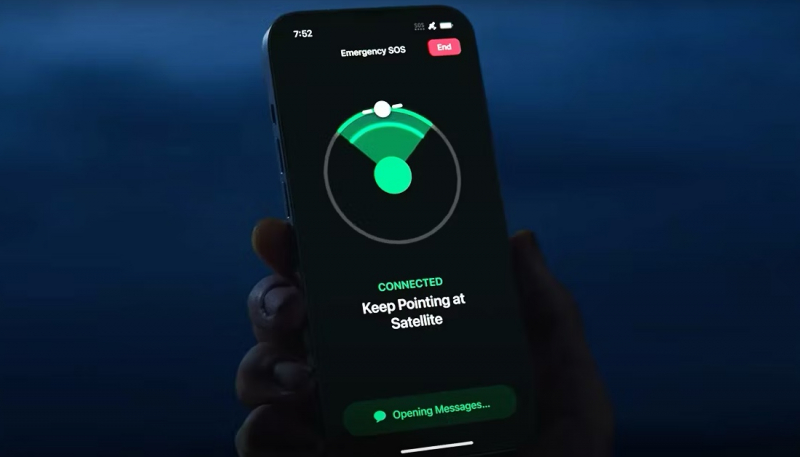The iPhone 14’s Emergency SOS via Satellite feature on Saturday saved a trio of BYU students who went canyoneering in Utah and became stuck in an area that had no cellular signal. Emergency SOS via Satellite debuted last fall and is designed to let iPhone 14 users access satellite communications to receive aid in emergency situations.
Apple’s Emergency SOS via satellite service utilizes the spectrum in L and S bands specially designated for mobile satellite services by ITU Radio Regulations. When an iPhone user makes an Emergency SOS via satellite request, the message is received by one of Globalstar’s 24 satellites in low-earth orbit traveling at speeds of approximately 16,000 mph. The satellite then sends the message down to custom ground stations located at key points all over the world.
The trio of students who were involved spoke to Utah’s KUTV and discussed their dangerous ordeal.
“We had read about this pretty cool canyon down there and we’ve been canyoneering for about a year,” said one of the students, Bridger Woods.
Woods and two of his friends were canyoneering in ‘the squeeze’ in Emery County on Saturday, when they got into a tough situation with unexpectedly deep water likely caused by a wet Utah winter and became stranded.
“Up until that point we’d been having a really great time,” said another student, Jeremy Mumford. “We knew it was going to be a technical canyon so we came prepared.”
Woods and another student, Jeremy Mumford, were stuck in the pool for over an hour, but they ultimately were able to get out and continue deeper. They encountered another pool where the water was chest deep, and they could not get out.
Because of the location of the canyon, there was no cellular signal, but the third student along for the adventure, Stephen Watts, had an iPhone 14 with him. Mumford said that every 20 minutes, a satellite would line u” to their location and they were able to get enough of a satellite signal to text 911.
As they waited for emergency services, the trio was able to get themselves out of the pool using rope and carabiners. Unfortunately, Woods was going into hypothermic shock, so they were unable to get out of the 10 to 15-foot hole that they were trapped in. They instead located driftwood and started a fire to try and stay warm while they waited for emergency crews to rescue them.
A helicopter crew from Salt Lake City eventually arrived, as did paramedics from Arizona, and the trio was rescued unharmed.
“The county, the paramedics, all the way from Arizona to helicopter crews from Salt Lake City, we just want to give a huge thank you to all the people who pitched in to save us,” said Mumford.
“I’ll be honest, I straight up cried when I saw the helicopter there, they were saying ‘Hey, we see you,’” said Woods. “I just have so much gratitude for them and I wish I met them under different circumstances, they all seem like awesome people but again, just a huge, huge thank you.”
The group told KUTV that they recommend taking a satellite phone on adventures in case of an emergency situation.
Every model in the iPhone 14 lineup — iPhone 14, iPhone 14 Plus, iPhone 14 Pro, and iPhone 14 Pro Max — can connect directly to a satellite. Emergency SOS via satellite builds on existing features, including Emergency SOS, Medical ID, emergency contacts, and Find My Location sharing, offering the ability to connect to a satellite for a more 360-degree approach to sharing critical information with emergency services, family, and friends.
The service allows Public Safety Answering Points (PSAPs) — or emergency services call centers — to connect to users in emergency situations and requires no additional software or protocols to enable communications. Users will be connected directly to emergency services that are equipped to receive text messages or to relay centers with Apple-trained emergency specialists who are ready to contact PSAPs that cannot receive text messages on the user’s behalf.


